Transportation & Mobility Progress, 2018-22
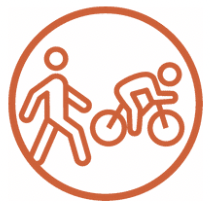
We strive for convenient multi-modal access to and through our campus, prioritizing low-carbon modes and a walkable campus to promote the health and safety of our community and the environment.
2018 Pitt Sustainability Plan Goals
- FLEET: Employ Pittsburgh 2030 District goal of 50% reduction in greenhouse gas emissions for direct transportation by 2030 (below 2017 baseline).
- SHUTTLES: Reduce Pitt Shuttle fuel usage 3% annually between FY18 and FY30.
- COMMUTING: Embrace Pittsburgh 2030 District goal of 50% reduction in greenhouse gas emissions from commuter travel by 2030 (below the 2013 Oakland neighborhood baseline).
- CARPOOL: Increase active Pitt registered carpools 2% annually between FY18 and FY30.
- VANPOOL: Add 1 new vanpool annually between FY18 and FY30.
- BIKING: Achieve Silver Bicycle Friendly University status from the League of American Bicyclists by FY20 and Gold in FY25.
Where We Are: Low Carbon Pitt Fleet
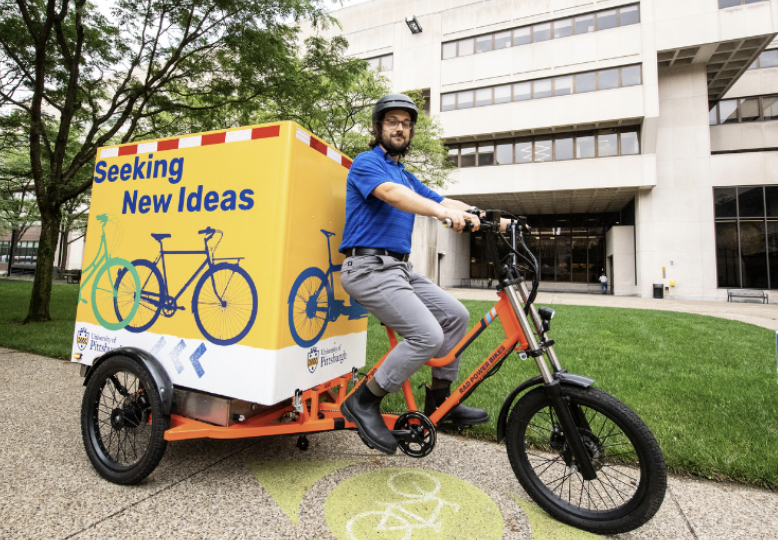
Electric Fleet Vehicles: The expanded partnership with Enterprise puts Pitt on a path to more hybrid and electric vehicles in the future, including pickup trucks, box trucks, cargo vans, and passenger vans. As of July 2022, the University had 13 electric vehicles, including 3 utility vehicles (2 Athletics & 1 Pitt Eats), 1 Nissan Leaf (Parking), and 9 electric bikes (8 for Pitt Police & 1 cargo for Sustainability).
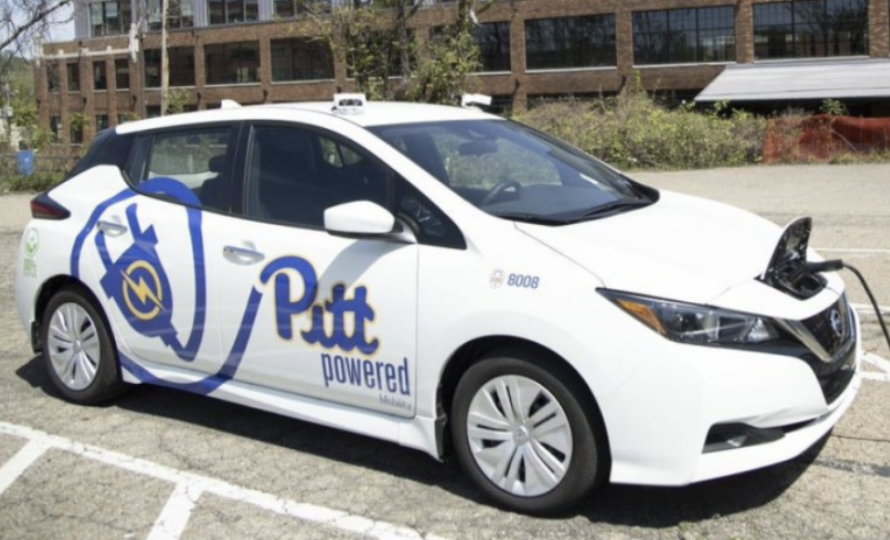
- In FY20 & 21, Pitt leased 4 Mitsubishi Fuso electric box trucks that were very visibly used across campus by Logistics. Mitsubishi exited the vehicle leasing market in FY22, so those trucks are no longer part of Pitt’s fleet. The Pitt Climate Action Plan acknowledged the University’s intention to fully electrify its vehicle fleet over time, including shuttles.
Where We Are: Commuting GHG Emissions
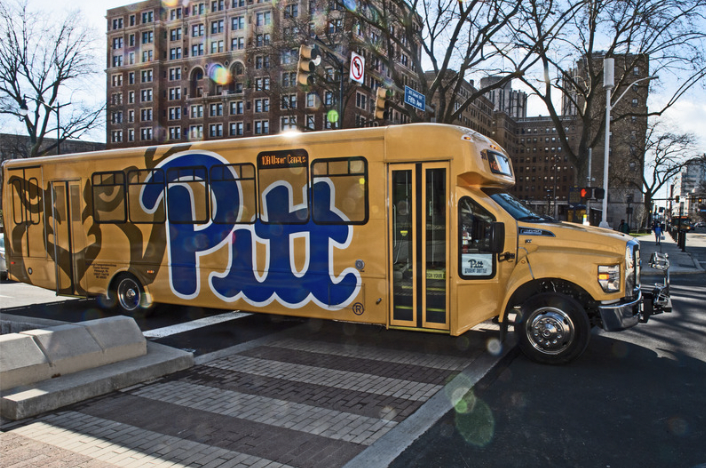
Commuting Emissions: The University of Pittsburgh’s FY21 GHG inventory reported a 54% reduction in GHG emissions below our FY08 baseline year, an outlier reduction not anticipated to be durable post-pandemic. Commuting has traditionally been Pitt’s third largest GHG emissions contributor, but for FY21, GHG emissions from commuting were 66% lower than FY20 (by 17,048 MT CO2e).
Pitt Shuttle Fuel Switching: In July 2020, 18 of the University’s 20 shuttles shifted to propane, helping reduce shuttle carbon emissions by 33% and localized nitrogen oxide emissions by ~20% (compared to previous shuttles, which utilized gasoline or 5% biodiesel).

Electric Vehicle Charging: The University of Pittsburgh was an early electric vehicle (EV) charging leader, adding 16 EV chargers in 2012. More recently, the University dramatically expanded its EV charging capacity for commuters and fleet vehicles, reaching 80 total EV plugs in FY22 (reaching 90 on the Pittsburgh campus in early 2023).
Pitt community members can access these EV chargers with a Pitt EV parking permit – and vehicles charged on-campus benefit from the University’s renewable electricity production and procurement.
Where We Are: Shared Mobility
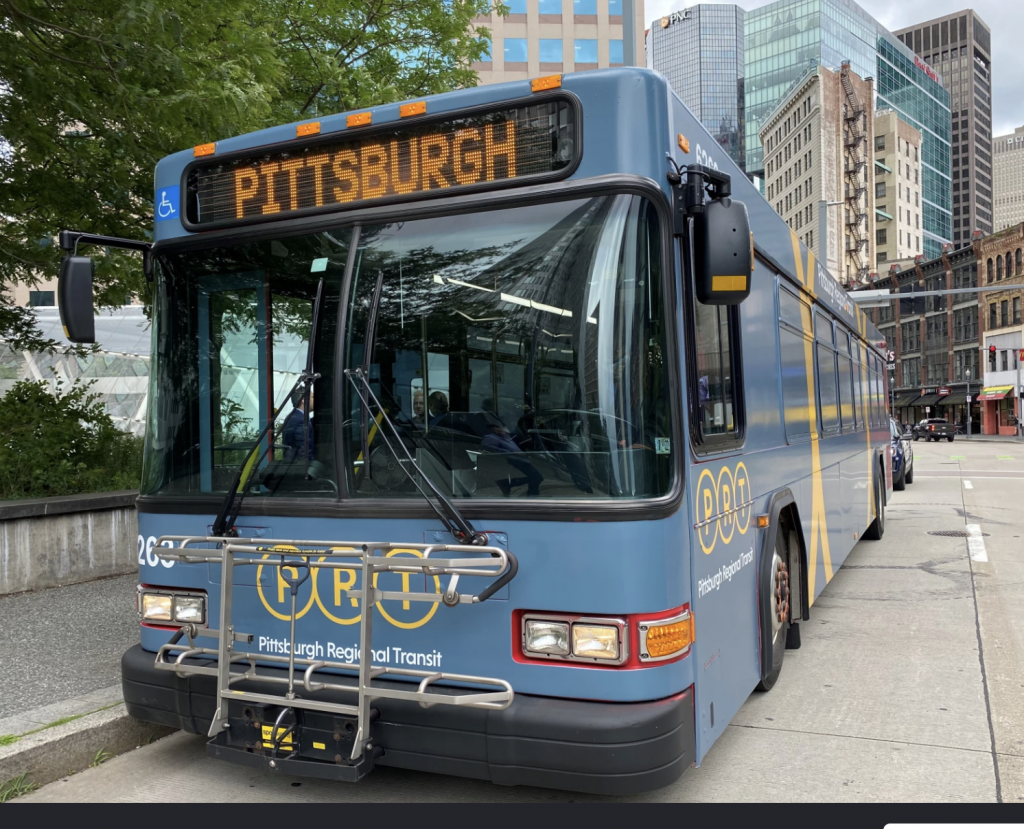
Because the University’s Pittsburgh campus is located in the third largest business district in the Commonwealth of Pennsylvania, both our urban scale and density compel us to prioritize active, shared, and low carbon mobility choices for traveling to, from, and around campus.
Pittsburgh Regional Transit: Pre-pandemic in FY19, Pitt riders took over 5.8 million rides on Pittsburgh transit annually. The University of Pittsburgh has offered free Pittsburgh Regional Transit (PRT) rides since 1996 and in 2021 the University reaffirmed the partnership with a multi-year agreement, ensuring Pitt students and employees can continue to avoid driving via free shared transit commutes on PRT buses, light rail, and inclines.

Carpools: Pitt’s 2018 carpooling goal was to increase Pitt-registered and active carpools 2% annually between FY18 and FY30. While carpools destined for Pitt are obviously more numerous, the University had only 157 registered carpools in FY18.
In FY21, Pitt had 167 registered carpools, representing an 8.4% growth between 2018 and 2021 (meeting the annual 2% growth goal). However, in FY22, registered carpools dropped to 116, which is below the FY18 baseline.
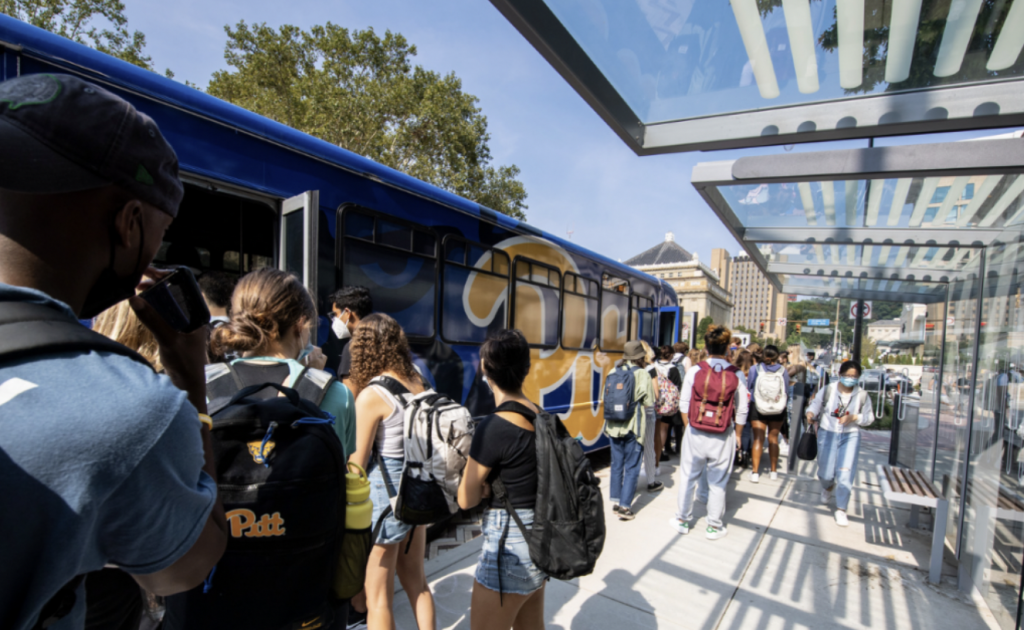
Vanpools: The University of Pittsburgh has lost ground on its Pitt Sustainability Plan vanpool goal, which was to add 1 new vanpool annually between FY18 and FY30. In FY18, Pitt had 7 vanpools, which it sustained through FY20 in partnership with CommuteInfo.
Where We Are: Active Mobility
Pitt is committed to promoting active mobility and deprioritizing vehicle traffic by enhancing and increasing safe and accessible pedestrian and biking routes across campus.
Bike Friendly Campus: In 2021, the University of Pittsburgh was honored with a Silver Bicycle Friendly University (BFU) award by the League of American Bicyclists (up from Bronze in 2018). This designation recognizes the University’s achievements in promoting and enabling safe, accessible bicycling on campus – and keeps us on track to achieve Gold by 2025.
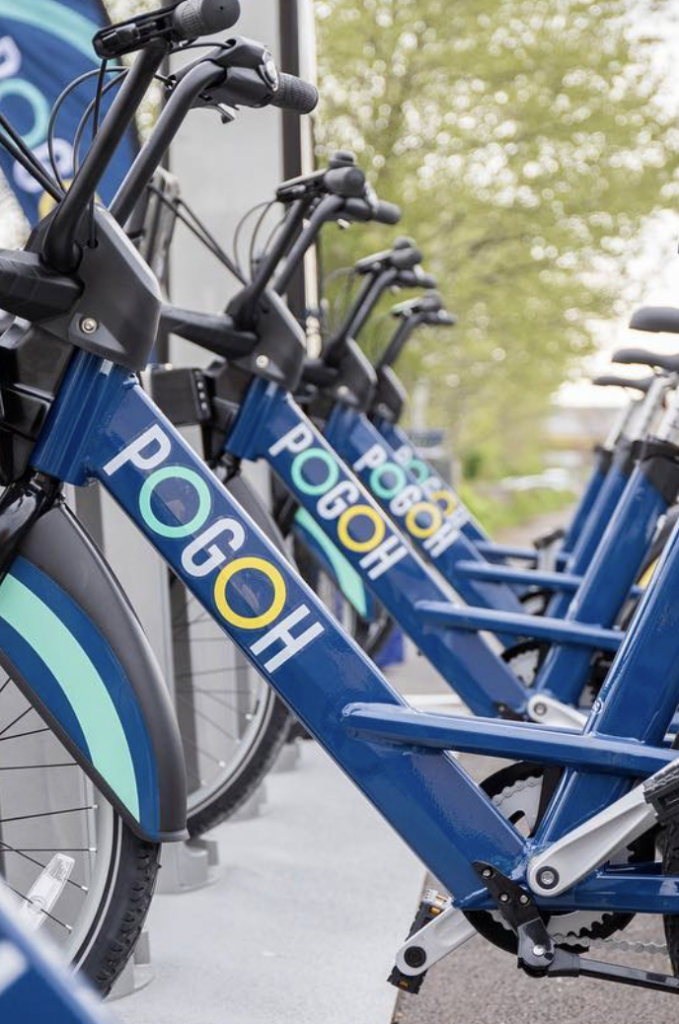
POGOH Bike Share: In Fall 2020, Pitt began offering all full-time Pitt students and employees free, unlimited 30-minute rides on POGOH, Pittsburgh’s bike sharing system (previously named “Healthy Ride”). The University first piloted its bike share benefit in FY20 for first-year students only (an opportunity cut short by the pandemic in Spring 2020).
Pitt community members have embraced the partnership, tallying 56,230 rides from August 2019 through October 2022. In FY22 alone, Pitt community members took 25,643 POGOH bike share rides.
Biking Infrastructure & Amenities: Pitt continues to make biking more accessible on campus with various strategies. Previously a stand-alone map, the Pitt Campus Bike Amenities Map was official folded into the Pittsburgh campus map in 2020. The University’s Pittsburgh campus currently boasts 450 bike racks, which offer 1,508 bike parking spaces via indoor, outdoor, and/or covered racks; bike lockers; and bike storage rooms (in select residence halls and the Murdoch Building).
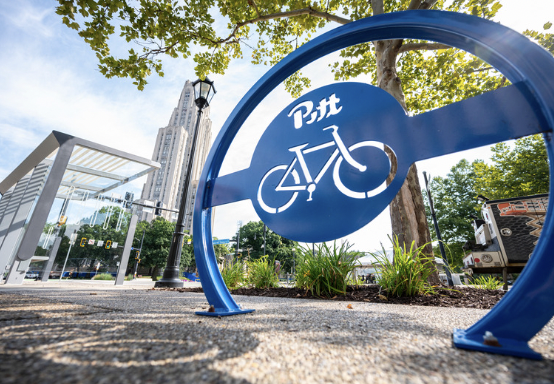
Regional transportation organizations regularly benchmark pedestrian and bike traffic at various campus locations; in Fall 2022, bike counters indicated that ~450 bikes travel through Posvar Passage every weekday (i.e., between Posvar Hall and Hillman Library).
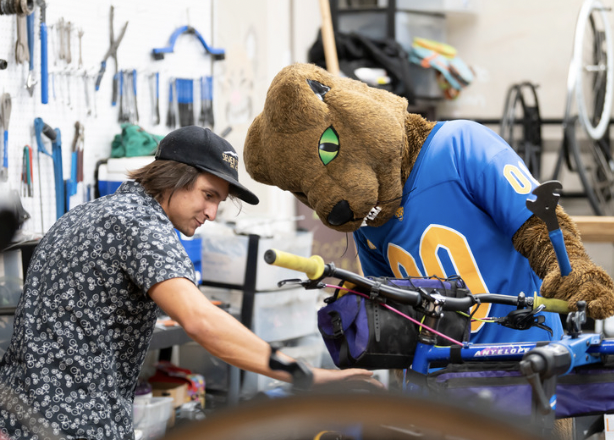
Bike cave: Established in 2017, the Pitt Bike Cave is a student–run bicycle maintenance & teaching shop open to anyone interested in biking. The concept won Pitt’s 2017 Sustainable Solutions competition and since 2017, the Pitt Bike Cave has helped hundreds of visitors every semester with expertise about biking and bike repair. The Pitt community and public can use the Bike Cave service for bike repairs, safety, and educational materials; participate in workshops; and gather as a community — all free of charge.
Walking: In addition to providing health benefits through physical activity, walking to class, work, and around Pitt’s urban campus is an important commuting mode.
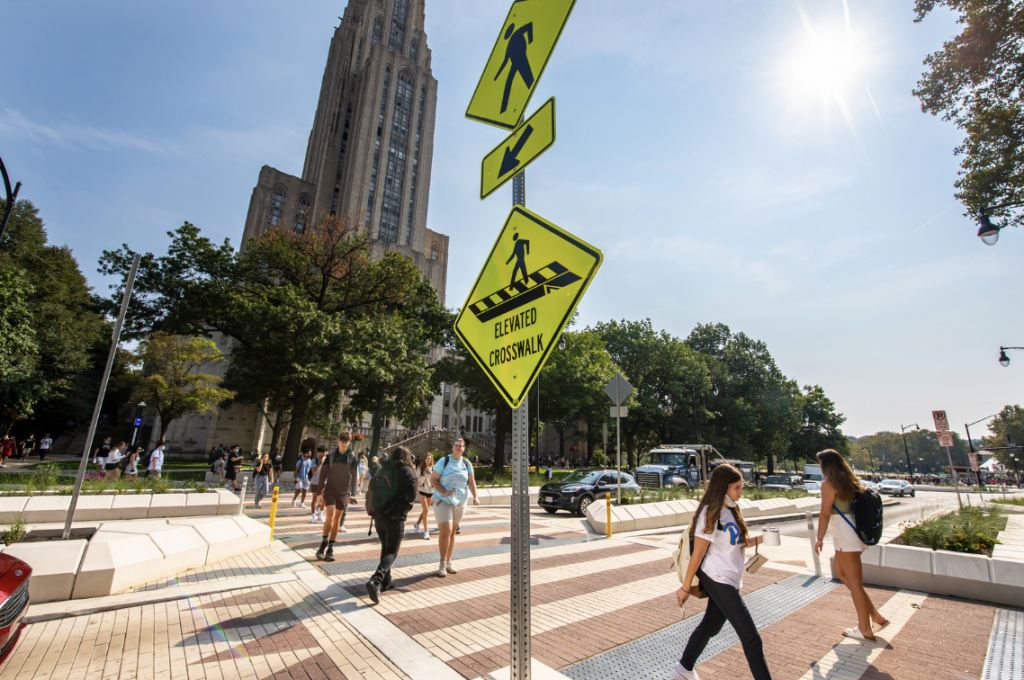
The 2021 Institutional Master Plan (IMP) reported that 5.2% of Pitt employees walked to campus in 2019 – and committed the University to maintaining at least 5.2% of employees as walkers through 2029. Combined with the 7,900 students living on-campus, by 2035 over 8,375 individuals could commute to campus by walking.
To further encourage and support walking, the University created the first “Walking” page on the Pitt Mobility website in 2021, helping highlight the benefits of walking and offering walking safety resources.